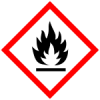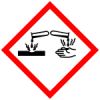The Producer has a plan to phase out by 2024 pesticides listed in category 2 of the Globally Harmonized System of Classification and Labelling of…
Coalition status
BCI Phase out by 2024
FSC highly restricted HHPs
Chemical pesticide presenting two or three out of the following hazards: acute toxicity, chronic toxicity and environmental toxicity.
Details
Type: Pesticide
Use: Rodenticide
Example applications: Agricultural and non-agricultural situations
Example pests controlled: Rats;Mice;Other small Rodents
Mode of action: Lethal stomach acid. Mitochondrial complex IV electron transport inhibitor.
Source: PPDB
Toxicty
Fatal if inhaled (H330)
Fatal if inhaled
Mammal toxicity
Acute oral LD50 for most sensitive mammal species (LD50 < 200mg/kg bw).
GHS safety labels
About Globally Harmonized System of Classification and Labelling of Chemicals (GHS)
From Wikipedia: The Globally Harmonized System of Classification and Labelling of Chemicals (GHS) is an internationally agreed-upon standard managed by the United Nations that was set up to replace the assortment of hazardous material classification and labelling schemes previously used around the world. Core elements of the GHS include standardized hazard testing criteria, universal warning pictograms, and harmonized safety data sheets which provide users of dangerous goods with a host of information. The system acts as a complement to the UN Numbered system of regulated hazardous material transport. Implementation is managed through the UN Secretariat. Although adoption has taken time, as of 2017, the system has been enacted to significant extents in most major countries of the world.[1] This includes the European Union, which has implemented the United Nations' GHS into EU law as the CLP Regulation, and United States Occupational Safety and Health Administration standards.
- H260

In contact with water releases flammable gases which may ignite spontaneously
Class: In contact with water, emit flammable gas - H300

Fatal if swallowed
Class: Acute Toxicity
Subclass: Oral - H311

Toxic in contact with skin
Class: Acute Toxicity
Subclass: Dermal - H318

Causes serious eye damage
Class: (Corrosion)Damage/irritation
Subclass: Eye - H330

Fatal if inhaled
Class: Acute Toxicity
Subclass: Inhalation - H400

Very toxic to aquatic life
Class: Aquatic
Subclass: Acute
